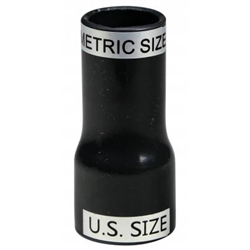 Metric & NPS
Metric & NPS
In the United States we describe plumbing size using the standard of NPS, which stands for nominal pipe standard. Nominal pipe standard is the approximate inside diameter of PVC pipe in a given size. For example a 1 NPS pipe will have an approximate inside diameter of 1, but the outside diameter is bigger and the fittings the pipe pushes into are bigger still. Let us emphasize that the inside diameter is nominal and is not exactly 1. To find what size pipe you have check the label printed on the pipe or the label printed in the fittings the pipe pushes into.
Sometimes you'll come across metric pipe. Metric pipe is common on equipment and aquariums manufactured overseas, and it is extremely difficult to find in the United States. When encountering metric pipe, it's best to convert the pipe to a US NPS standard size. We sell a variety of adapters that do this. Just like with the US standard, metric pipe is described by the nominal inside diameter. For the best accuracy when buying pipe, the pipe size is often printed on the pipe and fittings themselves. If your metric pipe came on a product manufactured overseas often the manufacturer will let you know what size pipe the product uses.
|
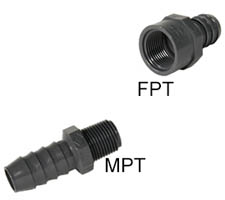
MPT or FPT
For threaded connections, MPT stands for male pipe thread and FPT stands for female pipe thread. Male pipe threads are always inserted into female pipe threads. The FPT/MPT standard is unique to the US and some overseas products will not use it. You can find the thread size printed on the fitting, or in the case of pumps with threaded connections the connection type will be listed in the product description and in the manual.
|

Slip
Slip fittings are plumbing fittings that can accept pipe of a given size. For example, a 1 slip x slip elbow is an elbow shaped fitting that 1 NPS pipe can slip into. Slip fittings need to be glued with PVC cement.
SPG/Street
PVC fittings that are labeled as SPG (spigot), or labeled as street fittings, fit into a slip fitting of a given size. For example, a fitting that is 1 SPG can fit inside a 1 slip fitting without pipe in between. SPG and street fittings do not fit inside of a pipe.
|
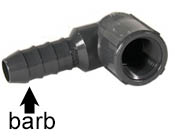
Barb
Barbed fittings are designed to fit inside of flexible hose. The barb fits inside the hose so the size reflects the inside diameter of the flexible hose it fits into. A 1 hose barb will fit inside of a piece of flexible tubing with a 1 inside diameter.
|
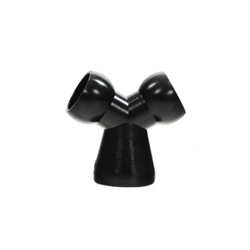
Loc-Line
Loc-Line is a proprietary product that only connects to itself using unique ball joints. ½ Loc-Line will only attach to ½ Loc-Line. To convert to Loc-Line you will need an adapter with a Loc-Line to MPT connection.
|
ID and OD
ID and OD simply stand for inside diameter and outside diameter. In general, the inside diameter is used far more often to describe pipe and tubing than the outside diameter. Remember all plumbing sizes are nominal and arent exactly the size they are labeled. Our 1 hose has a 1 inside diameter that will fit 1 hose barbs. The outside diameter is larger because of the tubing wall.
|
SCD40 and SCD80
SCD 40 (schedule 40) and SCD 80 (schedule 80) describe the thickness of a PVC fitting or pipe. SCD 40 is the standard for regular home use and SCD 80 is thicker. Because it uses more material, SCD80 is more expensive. SCD40 fittings are fine for most aquarium applications, but we recommend SCD80 fittings in places where failure would be catastrophic. One example is a bulkhead fitting on the bottom of a 1,000-gallon aquarium on the 15th floor of luxury apartment. You really dont want that fitting to fail.
|
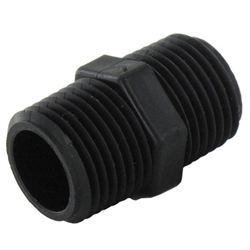
Nipple
A nipple is a fitting that has male pipe thread at each end. It is used to connect two fittings with female pipe threads.
|
Other Fittings
We also carry ball valves, gate valves, adapters, elbows, tees, unions, suction screens, reducer bushings, hose clamps and many other plumbing parts. We will not discuss those because the names pretty much reveal what they are intended for.
|
Further Reading
We encourage you to also read our other articles on aquarium plumbing. Understanding plumbing will save you time and prevent disasters, and it will also lead to an aquarium that is quieter and more energy efficient.
- Aquarium Plumbing Primer
- Plumbing Basics: Manifolds, Bypasses & Ball Valves
|
|




























 Metric & NPS
Metric & NPS



